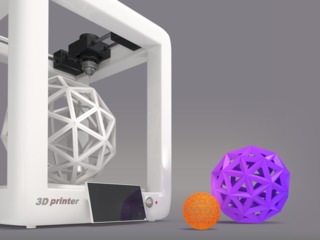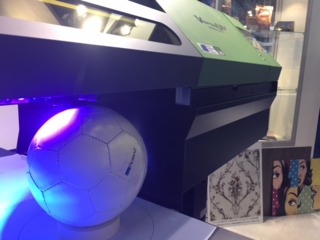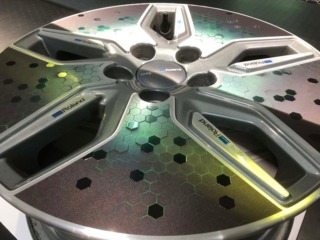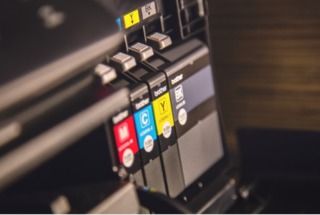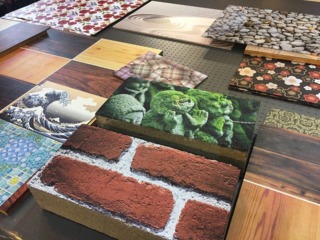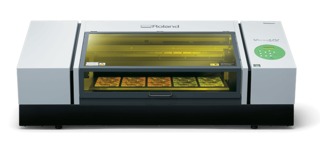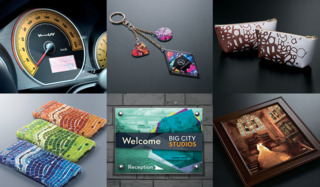Advances in Technology Spur Growth in Industrial Printing
Industrial printing uses print technology for renderings of industrial items during the manufacturing process to foster growth.
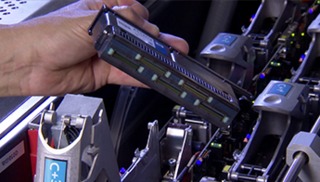
Industrial printing utilizes print technology for renderings of industrial items during the manufacturing process to foster its growth trajectory. As new inks, coatings, and inkjet printing are developed, a new expansion of applications advance. In The Future of Functional and Industrial Print to 2022, Smithers Pira values the current market at $76.9 billion, up from $37.2 billion in 2012, with a growth forecast of $114.8 billion by 2022. Industrial printing is unique in its variety because it can be used for décor and laminates, ceramics, electronics, glass, aerospace and automotive, biomedical, promotional items, 3D printing, and inkjet printed textiles.
“Our customers are way out there, printing anything from caulk tubes to drinking glasses, golf balls to soccer balls, metal trays to metal signs, beverage cans to water bottles, saw blades to Teflon strips, and drumsticks to wood flooring,” said Jim Lambert, VP and GM of INX International Ink Co.
According to David J. Murphy, WW Director of Marketing & Business Development at HP PageWide Industrial, the advancement of inkjet digital technology is a major contributor to the expansion of the industrial printing market. Industrial print will continue to push high-volume inkjet production solutions forward.
“Production inkjet is now appealing to more customers across a growing range of applications, from publishing, production mail and general commercial print to corrugated packaging and industrial printing,” said Murphy. “Many PSPs have invested in inkjet with the original intention of focusing on one application—maybe transaction statements or books. A large number of HP PageWide customers, however, have expanded to an ever-widening range of applications, such as industrial print.”
“A manufacturer producing serial number plates for lawnmowers would have previously screened or pad printed the basic design, and add details later on—such as the serial number, production year or batch number,” explained Michael Maxwell, Senior Manager at Mimaki.
“Digitally this can all be done in one step, removing costly supply chain management and logistics while opening the door to further customization, such as using different languages or different imagery for different customer groups or product lines,” he explained.
Creating Value Through Customization
“The ability to customize is the biggest game-changer in industrial printing,” said Jay Roberts, UV Printer Product Manager at Roland DGA. It’s the difference between printing a massive number of objects that become commodity, and producing a higher value, customized and personalized object.
The UV flatbed printer allows for this level of customization. Through the use of jigs PSPs can move from printing one type of object to the next—in less than a minute.
“It’s materially independent,” explained Roberts. “It doesn’t matter if the fixtures are a one-off or part of a larger scheme, whether or not the article is a 3D object, tin, box, mouse pad, or keyboard, if it can be secured into the fixture – the jig – it can be identified as a printable object for whatever purpose possible.”
Printing on the flatbed with jigs “can utilize redundancy, consistency, and repeatability,” he added.
Each object can also be customized by setting up a template for variable-data printing, the same way you would set up printing a non-3D object.
“We have seen everything from displays for household appliances to children’s toys and promotional gadgets all come out of the same factory which only had one [Mimaki] UJF (large-format UV-LED flatbed) machine running,” said Maxwell.
“There is no limitation to the range of products one could take on and it is relatively easy to ramp up an industrial customer base while still keeping your machines running at capacity with your existing customer base,” he noted.
Mimaki is one of several vendors offering UV curable inks in its case from rigid to 350% flexible, and manufactured to ensure users can optimize their production for the widest range of applications. Additionally, Mimaki jettable primers allow for better adhesion to difficult materials, but only where it’s needed, so translucence and other material properties remain unaffected.
Inks and Coatings Provide Advanced Flexibility, Adhesion, and Durability
“Advances in ink quality, adhesion, LED, and cooler curing have significantly expanded the variety of substrates available to industrial print,” according to Dan Johansen, Marketing Manager of Wide Format Solutions & Commercial and Industrial Printing Business Group at Ricoh USA.
UV inks are able to cure faster, while maintaining good adhesion, and great abrasion resistance.
“LED curing has made printing to very thin and certain plastics a possibility where it previously wasn’t,” said Johansen. “Other older, hotter curing methods would melt these thin and plastic substrates, so you’d have to go another route. With today’s technology, you can print to almost anything.”

